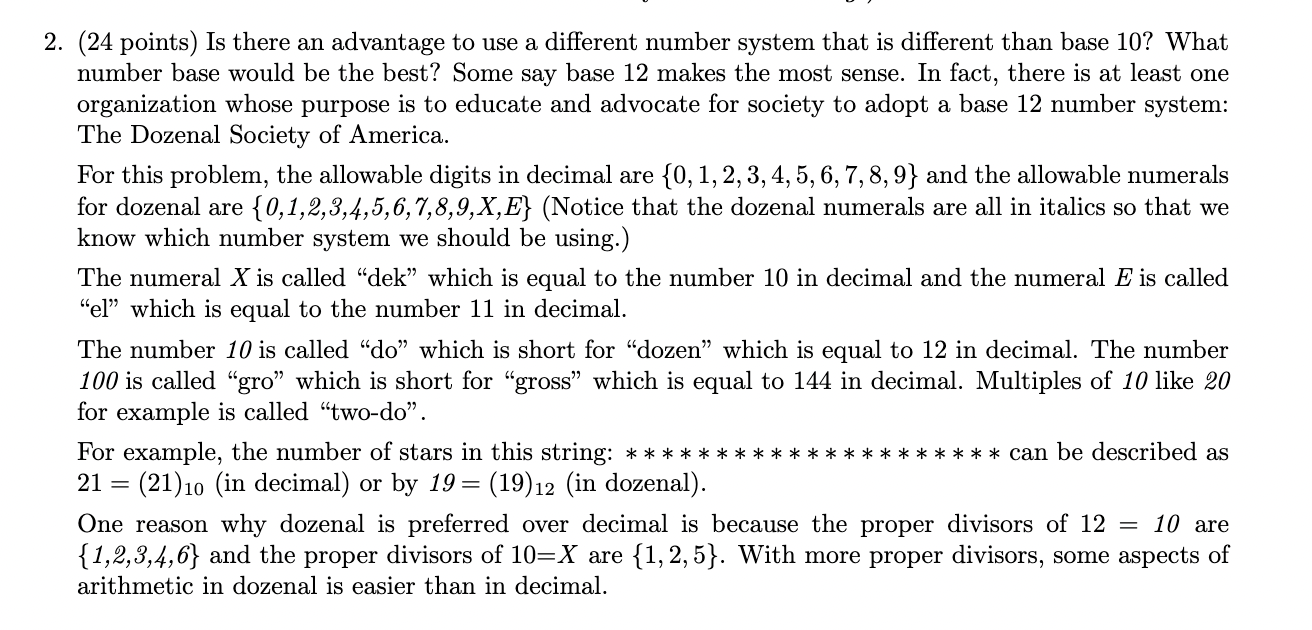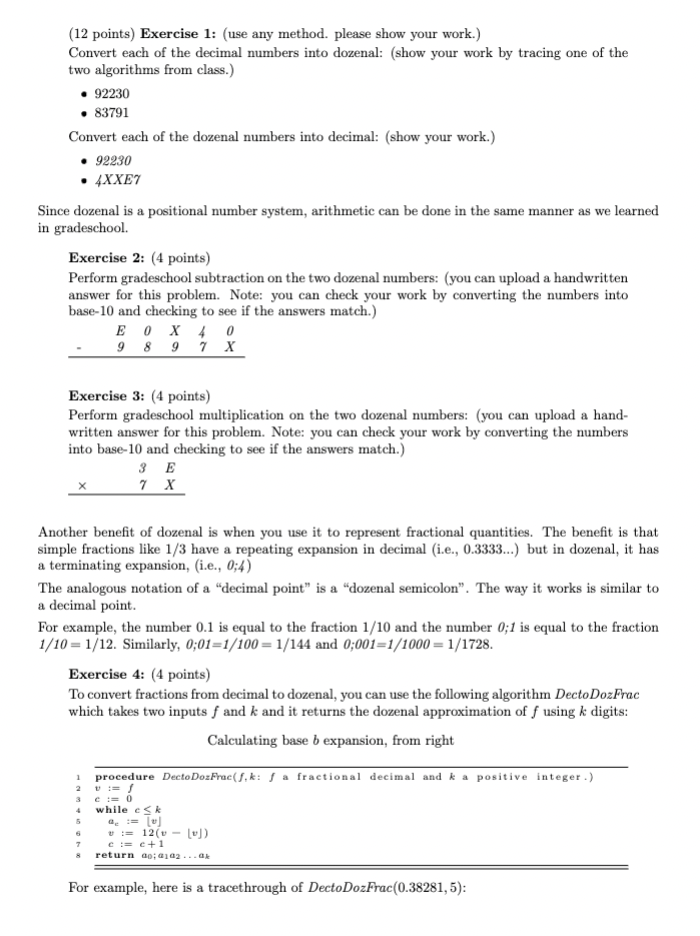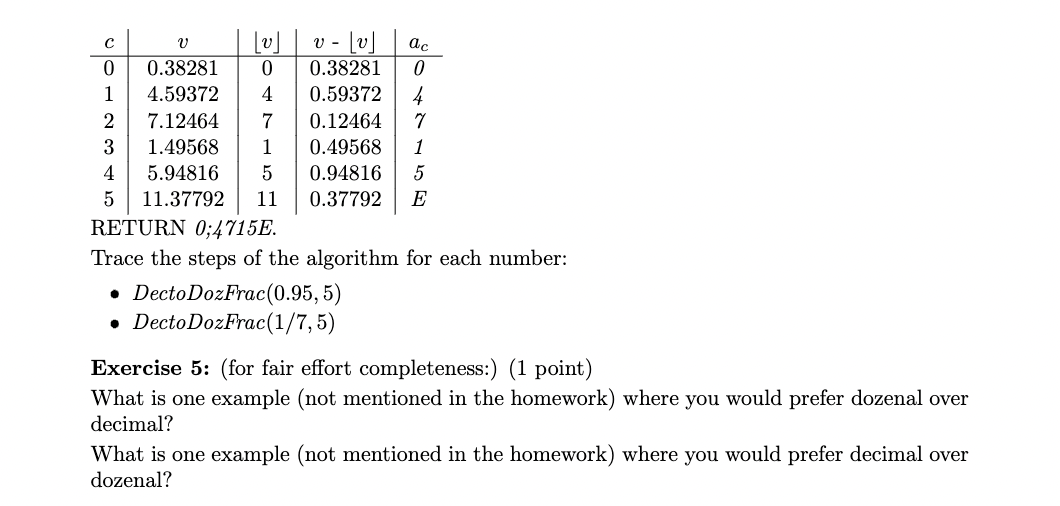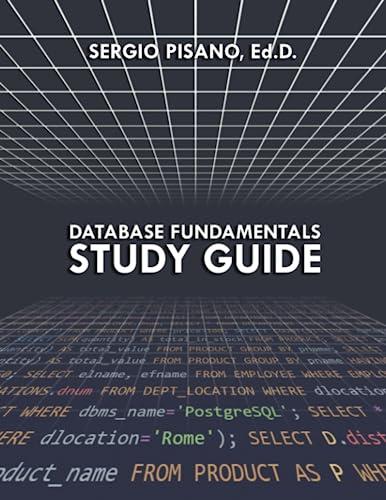


2. (24 points) Is there an advantage to use a different number system that is different than base 10 ? What number base would be the best? Some say base 12 makes the most sense. In fact, there is at least one organization whose purpose is to educate and advocate for society to adopt a base 12 number system: The Dozenal Society of America. For this problem, the allowable digits in decimal are {0,1,2,3,4,5,6,7,8,9} and the allowable numerals for dozenal are {0,1,2,3,4,5,6,7,8,9,X,E} (Notice that the dozenal numerals are all in italics so that we know which number system we should be using.) The numeral X is called "dek" which is equal to the number 10 in decimal and the numeral E is called "el" which is equal to the number 11 in decimal. The number 10 is called "do" which is short for "dozen" which is equal to 12 in decimal. The number 100 is called "gro" which is short for "gross" which is equal to 144 in decimal. Multiples of 10 like 20 for example is called "two-do". For example, the number of stars in this string: can be described as 21=(21)10 (in decimal) or by 19=(19)12 (in dozenal). One reason why dozenal is preferred over decimal is because the proper divisors of 12=10 are {1,2,3,4,6} and the proper divisors of 10=X are {1,2,5}. With more proper divisors, some aspects of arithmetic in dozenal is easier than in decimal. Exercise 2: (4 points) Perform gradeschool subtraction on the two dozenal numbers: (you can upload a handwritten answer for this problem. Note: you can check your work by converting the numbers into base-10 and checking to see if the answers match.) Exercise 3: (4 points) Perform gradeschool multiplication on the two dozenal numbers: (you can upload a handwritten answer for this problem. Note: you can check your work by converting the numbers into base-10 and checking to see if the answers match.) Another benefit of dozenal is when you use it to represent fractional quantities. The benefit is that simple fractions like 1/3 have a repeating expansion in decimal (i.e., 0.3333...) but in dozenal, it has a terminating expansion, (i.e., 0;4) The analogous notation of a "decimal point" is a "dozenal semicolon". The way it works is similar to a decimal point. For example, the number 0.1 is equal to the fraction 1/10 and the number 0;1 is equal to the fraction 1/10=1/12. Similarly, 0;01=1/100=1/144 and 0;001=1/1000=1/1728. Exercise 4: (4 points) To convert fractions from decimal to dozenal, you can use the following algorithm DectoDozFrac which takes two inputs f and k and it returns the dozenal approximation of f using k digits: Calculating base b expansion, from right \begin{tabular}{ll} \hline & procedure DectoDozFrac( f,k:f a fractional decimal and k a positive integer.) \\ 2 & v:=f \\ 3 & c=0 \\ 4 & while ck \\ 5 & ae::=v \\ 6 & v:=12(vv) \\ 7 & c:=c+1 \\ 8 & return a0;a1a2ak \\ \hline \hline \end{tabular} RETURN 0;4715E. Trace the steps of the algorithm for each number: - DectoDozFrac (0.95,5) - DectoDozFrac (1/7,5) Exercise 5: (for fair effort completeness:) (1 point) What is one example (not mentioned in the homework) where you would prefer dozenal over decimal? What is one example (not mentioned in the homework) where you would prefer decimal over dozenal









